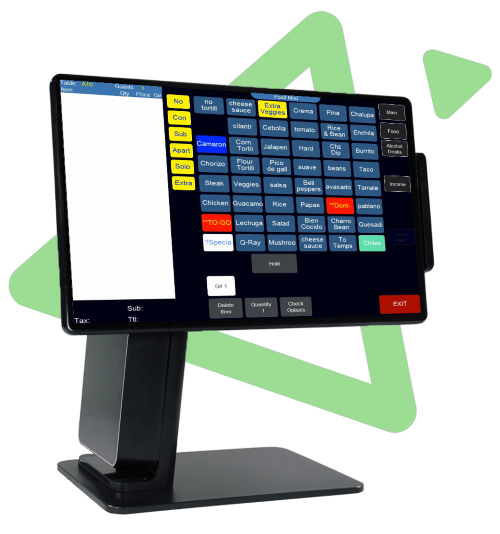Data protection best practices in Restaurant POS Software platforms: What you must know
How POS System Functions: A Comprehensive Overview for Entrepreneur

Recognizing the Parts of a POS System

Exactly How Sales Purchases Are Refined
When a consumer decides to buy, the sales deal starts a series of systematic steps within the POS system. Initially, the cashier inputs the items being purchased, which are scanned via a barcode reader or by hand entered. This action fetches item information, consisting of rates and suitable taxes, from the system's database.Next, the customer exists with the complete quantity due. The POS system then refines the settlement, whether via money, bank card, or mobile payment methods (Restaurant POS Software). For digital settlements, the POS safely communicates with payment cpus to accredit and verify the transaction.Once the repayment is confirmed, the system creates a receipt, which can be printed or sent out digitally. This receipt works as receipt for the consumer. The transaction information is recorded in the system, ensuring exact sales records and monetary tracking for the service.
Inventory Monitoring and Tracking

Efficient inventory administration and tracking are essential components of a POS system, as they assure that companies preserve optimal stock levels and minimize inconsistencies. A durable POS system enables for real-time supply updates, showing sales and returns immediately. This allows local business owner to check stock levels properly, ensuring that prominent things are readily available while avoiding overstocking of much less preferred products.Additionally, advanced POS systems provide functions such as computerized stock informs and reorder suggestions, improving the procurement process. Barcoding and RFID modern technology boost precision in tracking inventory motion, lowering human error. Substantial coverage devices give understandings right into supply turn over prices, helping companies make notified choices concerning acquiring and item offerings. Inevitably, reliable supply monitoring via a POS system not just improves functional performance but likewise enhances client contentment by guaranteeing product accessibility.
Examining Consumer Information and Insights
Client information analysis functions as a powerful tool for businesses utilizing a POS system (Restaurant POS Software). By checking out and gathering purchase data, businesses can uncover important understandings concerning client behavior and preferences. This analysis allows them to determine purchasing fads, peak buying times, and popular items, thus educating inventory choices and advertising strategies.Additionally, companies can segment their customer base, permitting individualized advertising and marketing initiatives that provide to details demographics or acquiring behaviors. Recognizing consumer loyalty patterns likewise assists in establishing targeted promos and benefits programs.The information obtained from a POS system can also expose understandings into customer responses, allowing businesses to make educated choices relating to product offerings and service renovations. Inevitably, leveraging client information efficiently can boost the overall purchasing experience, foster consumer satisfaction, and drive income development
Benefits of Executing a POS System

Regularly Asked Concerns
What Kinds of Organizations Can Take Advantage Of a POS System?
Numerous organizations take advantage of a POS system, consisting of retailers, dining establishments, beauty salons, and ecommerce platforms. These systems improve transactions, inventory management, and client data, improving operational effectiveness and boosting client experience throughout varied markets.
Exactly how Much Does a POS System Typically Cost?
The expense of a POS system typically ranges from a couple of hundred to numerous thousand bucks, relying on functions, more info hardware, and software application. Companies must take into consideration continuous costs for maintenance, support, and transaction handling when budgeting.
Can I Integrate a POS System With Existing Software Application?
Incorporating a POS system with existing software application is frequently feasible. Several systems use APIs or built-in compatibility functions, permitting companies to simplify operations and boost capability by linking various software application applications efficiently.
What Training Is Needed for Staff to Use a POS System?
Training for team to use a POS system typically consists of understanding software application performances, refining purchases, handling inventory, and managing customer interactions. Practical demos and hands-on session improve proficiency and confidence being used the system successfully.
What Occurs if the Internet Drops While Utilizing a POS System?
Transactions get more info may be interrupted if the web goes down throughout POS system usage. Numerous systems provide offline capacities, permitting basic procedures to continue, however complete performance, consisting of real-time inventory updates, will certainly be restricted. A Factor of Sale (POS) system is made up of a number of vital components that function with each other to handle and help with transactions business operations. Efficient supply administration and monitoring are important components of a POS system, as they ensure that businesses maintain perfect stock degrees and reduce inconsistencies. Client information analysis offers as a powerful tool for organizations using a POS system. Comprehending customer commitment patterns additionally assists in establishing targeted promos and rewards programs.The information gleaned from a POS system can also disclose insights right into consumer feedback, making it possible for organizations to make educated choices relating to product offerings and service improvements. Carrying out a POS system supplies various benefits that can greatly improve company here procedures.